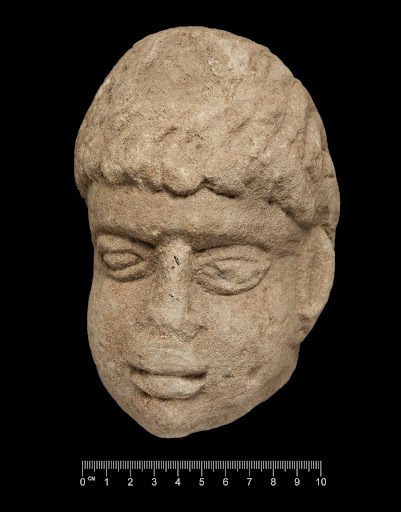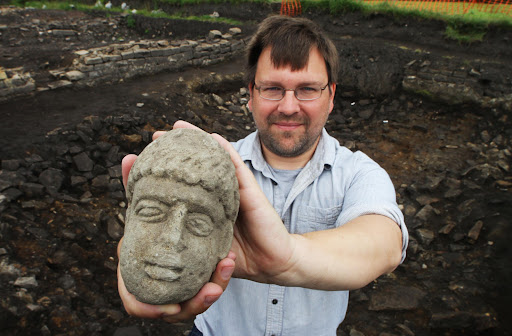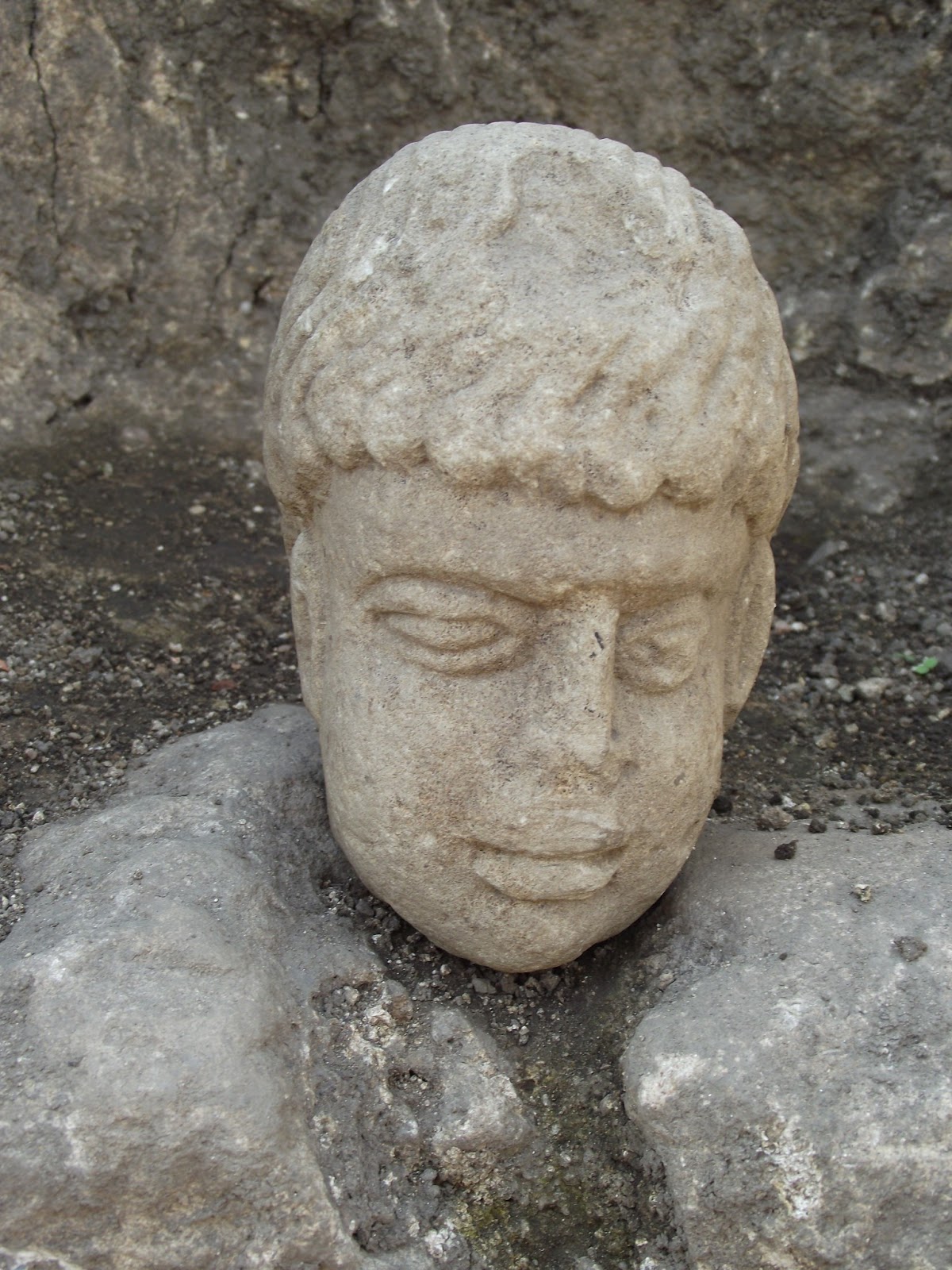In a remarkable archaeological find, a sculpted stone head thought to represent a local Roman deity has been uncovered at the Binchester Roman fort near Bishop Auckland in County Durham. Excavated from an ancient refuse site, this 1,800-year-old artifact offers an intriguing insight into the spiritual practices of the area during Roman times. The discovery, closely resembling the Celtic god Antenociticus, was made by a first-year archaeology student and has generated considerable interest among historians and archaeologists.
Unearthing at Binchester Roman Fort

The stone head, approximately 20 cm in size and crafted from sandstone, dates back to the second or third century AD. It was unearthed during an excavation at the Binchester Roman fort, a historically significant location in northern England. The student who discovered it was part of a team excavating the remnants of an ancient bathhouse when they stumbled upon this historical object. The head had been buried in what was once a refuse dump, likely discarded after the bathhouse ceased operation in the fourth century AD.
Resemblance to the Celtic God Antenociticus

This stone head bears a notable likeness to Antenociticus, a Celtic deity known to have been venerated in the region as a source of military inspiration. A similar head, identified as Antenociticus through an inscription, was discovered in 1862 at Benwell, Newcastle upon Tyne. This link has prompted experts to speculate that the Binchester head could also depict the same god, though conclusive identification remains uncertain.
The Importance of the Discovery
Dr. David Petts, an archaeology lecturer at Durham University, highlighted the significance of this find. He pointed out that the head was located near a small Roman altar found two years prior, indicating a possible connection to a shrine within the bathhouse. The existence of such a shrine underscores the importance of this deity to the local Roman community. Antenociticus is unique to the northern frontier of the Roman Empire and is not referenced in any other Romano-British locations or European inscriptions. This regional uniqueness has led scholars to view Antenociticus as a local god, perhaps even a “Geordie” deity worshipped by the area’s inhabitants during Roman rule.

The Discovery’s Influence on Archaeology
For Alex Kirton, the 19-year-old archaeology student who made the find, this discovery marks a pivotal moment in his career. Kirton shared his enthusiasm, calling it one of the most exhilarating experiences an archaeology student could encounter. This discovery is part of a larger five-year initiative at Binchester Roman fort aimed at uncovering new knowledge about the late Roman Empire.

The project involves collaboration between Durham University’s archaeology department, Stanford University’s archaeology center, the Architectural and Archaeological Society of Durham and Northumberland, and Durham County Council. Together, these organizations strive to illuminate the final years of Roman governance in Britain.
Conclusion

The unearthing of the 1,800-year-old stone head at Binchester Roman fort provides a fascinating look into the religious traditions of the region during Roman times. Although the precise identity of the deity remains uncertain, its resemblance to Antenociticus indicates a local significance that transcends the fort’s confines. As archaeologists continue their exploration of this site, further discoveries may emerge, enhancing our understanding of the spiritual and cultural fabric of ancient Roman Britain.

